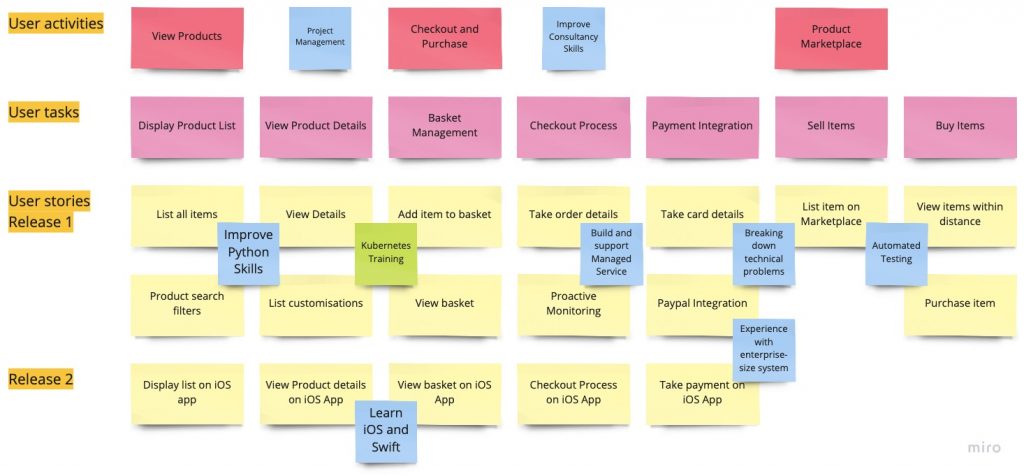As engineers we spend so much time focusing on the client’s projects, developing Impact Maps, Story Maps, Stakeholder Maps… all sorts of maps to confirm our approach and provide shared understanding between everyone and a strategy for solving the problem. What often doesn’t get considered is how the members of the team can use the opportunities within a project to improve and learn. Making sure that your team feel challenged and invested whilst providing a safe space helps them to feel valued and be at their natural best. At Infinity Works we strive to be “Best for Client, Best for Colleague”, so with that in mind I had an idea around Team Development Roadmaps.
What’s one of those then? I see it as a personal progression plan that ties into the project and its milestones in a way that allows you to link both personal and project targets together. They’re often seen as separate, but I believe providing opportunities within projects to allow team members to develop and experiment is a great way to keep them motivated. I did this recently with a new team of mine and I’ve outlined my approach here, hopefully you might find it useful.
First off, we did an initial brainstorming session where I had the team spend 10 minutes jotting down all of their goals. We used Miro (my new favourite online collaboration tool) to facilitate the session. We then spent the next 30 minutes walking through each of the goals, allowing the team to talk about what’s important to them.

If possible, have this conversation right at the start of a project, or as the team’s entering the forming phase – it shouldn’t be an afterthought. Having an open and honest conversation tunes everyone in to each other’s goals and aspirations. We actually unearthed some common threads between team members, and opportunities to support each other in achieving those goals which we wouldn’t have known about otherwise.
When we had a high level project roadmap and an understanding of what technologies, features and engagements we’d need with various stakeholders, we then revisited our wall of personal goals. We had another session to line up personal goals with project milestones, to identify opportunities in the project that can contribute towards them:

There will often be goals or activities that for whatever reason won’t be achievable within the project itself, such as long-running themes or external activities like engaging in communities of practise. It’s still worth capturing these as the team can still discuss ways to accommodate these too, for example agreeing on lunch breaks long enough to allow people to attend other meetups, or factoring in time on activities outside of the project into sprint commitments,
Depending on the stage of your project and level of detail known, the output from this session may be as high-level as the diagram above, or it could be as detailed as a Story Map that overlays personal goals on top.

Try to align the two roadmaps as closely as possible to increase the chance of sticking to them. Build Story Maps around your team’s goals, attribute them to milestones and factor them in to your usual team ceremonies. When walking through user stories in planning, identify how they can contribute to individuals’ personal goals and organise the team in the best way to balance both project and personal goals.

Finally, we captured the goals and associated actions in a table. This provided us with a targeted list of actions to focus on, along with owners and a review date so we can regularly review progress and check actions and goals off as they’re completed.
I believe doing this will pay dividends in many ways. By investing in your team this way they’ll feel valued and motivated, and it can help to build camaraderie as they work together to help achieve each other’s goals. I’m keen to hear feedback on this approach, what works well and not so well, and any other suggestions for building teams. Hopefully this gives you food for thought!

